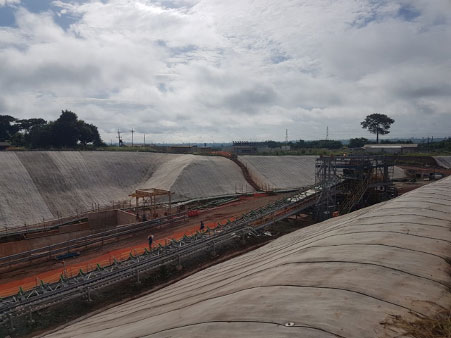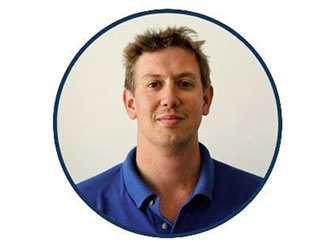Concrete has been the most prominent construction material globally for decades, but change is coming for various reasons.
The civil engineering industry has seen some incredible innovations over the years. These innovations, each in their own way, have advanced the industry and help those working in it.
Over the last 15 years, one such innovation has been the fabric which is often described as Concrete on a Roll™. Developed by British company Concrete Canvas Ltd, the geosynthetic contains a dry concrete mix which allows it to stay flexible when dry but then hardens into a reinforced concrete layer when hydrated and left to dry. The company produces the material in various thicknesses; Concrete Canvas (CC) is classed as a Geosynthetic Cementitious Composite Mat (GCCM). CC was originally invented to create semi-permanent shelters that can quickly be set up in disaster relief situations.
CC offers significant benefits over traditional concrete installation methods. The speed at which it can be installed allows projects worldwide to be completed faster, which comes with further benefits, such as cost savings and a safer work environment.
When examining the time it takes to install GCCMs compared to traditional poured or sprayed concrete, the difference is clear. The GCCM can be laid at rates of over 200m2/hour. Even discounting the time needed to mix traditional concrete on site, this is ten times faster than traditional concrete. One of the reasons why it is so much quicker to install is that the installation process is much easier and requires far fewer people to complete. CC can easily be cut to the required size needed on-site and, in some cases, installed by hand. The CC is then secured in place, hydrated and left to dry. After just 24 hours the material is hardened enough for it to be useable.

Concrete Canvas has been used on large scale sites such as mining and other civil engineering projects.
Being able to install this solution quicker than traditional concrete allows projects to be finished more quickly. There are two key reasons why this change for engineering projects represents a significant benefit. Firstly, the amount of time available to complete a project is sometimes limited. This can be because of a variety of factors, such as environmental, logistical or financial. Secondly, because GCCMs allow projects to be complete sooner, the overall cost can also be reduced. As mentioned, installing CC requires fewer workers on-site than traditional concrete, along with no requirement for specialist machinery or training to install it, which further reduces the overall cost of a project. Combine this with eliminating the cost of mixing trucks and the logistical arrangements which come with them and the overall cost of a project can be significantly lower. This can allow smaller companies or clients with limited budgets, like local authorities, to take on civil engineering projects which may have been impossible for them in the past.
Another reason why the Concrete on a Roll™ is changing engineering projects is the reduction in the environmental impact it offers. Concrete Canvas has been used by the UK’s Environment Agency as a more environmentally sensitive concrete solution than traditional concrete. There are a few reasons for this. Firstly, Concrete Canvas has a low washout rate and low alkaline reserve. This allows it to be installed in areas which may be environmentally sensitive without the risk of it having an adverse effect on the environment or any natural waterways around it. This is one reason why CC is often used as for channel lining or canal lining around the world. One problem with poured or sprayed concrete, particularly when working in environmentally sensitive areas is that excess concrete in the form of rebound or back-spray can damage plant life and natural habitats. As there is no spraying of concrete needed with a GCCM, this is not an issue. Furthermore, GCCMs have a lower carbon footprint than traditional concrete, and when the environmental impact of moving mixers and running them on-site is considered then Concrete Canvas represents a more environmentally friendly option than sprayed or poured concrete.
Overall, in just over 15 years since production of Concrete Canvas began, it has been used on projects in over 80 countries. The points highlighted above show how this fabric has changed engineering projects and continues to do so. Concrete on a Roll™ is a unique idea which was developed by two university students who went on to form the company Concrete Canvas. It is a perfect example of looking at traditional materials and asking how they can be improved using new techniques and technology to create something new.

William Crawford
William Crawford is a director and co-founder of Concrete Canvas. He holds a degree in Mechanical Engineering from the University of Bristol and a joint Masters degree in Industrial Design Engineering from Imperial College and the Royal College of Art. Concrete Canvas head office is currently based in South Wales.
Scott Ellyson, CEO of East West Manufacturing, brings decades of global manufacturing and supply chain leadership to the conversation. In this episode, he shares practical insights on scaling operations, navigating complexity, and building resilient manufacturing networks in an increasingly connected world.